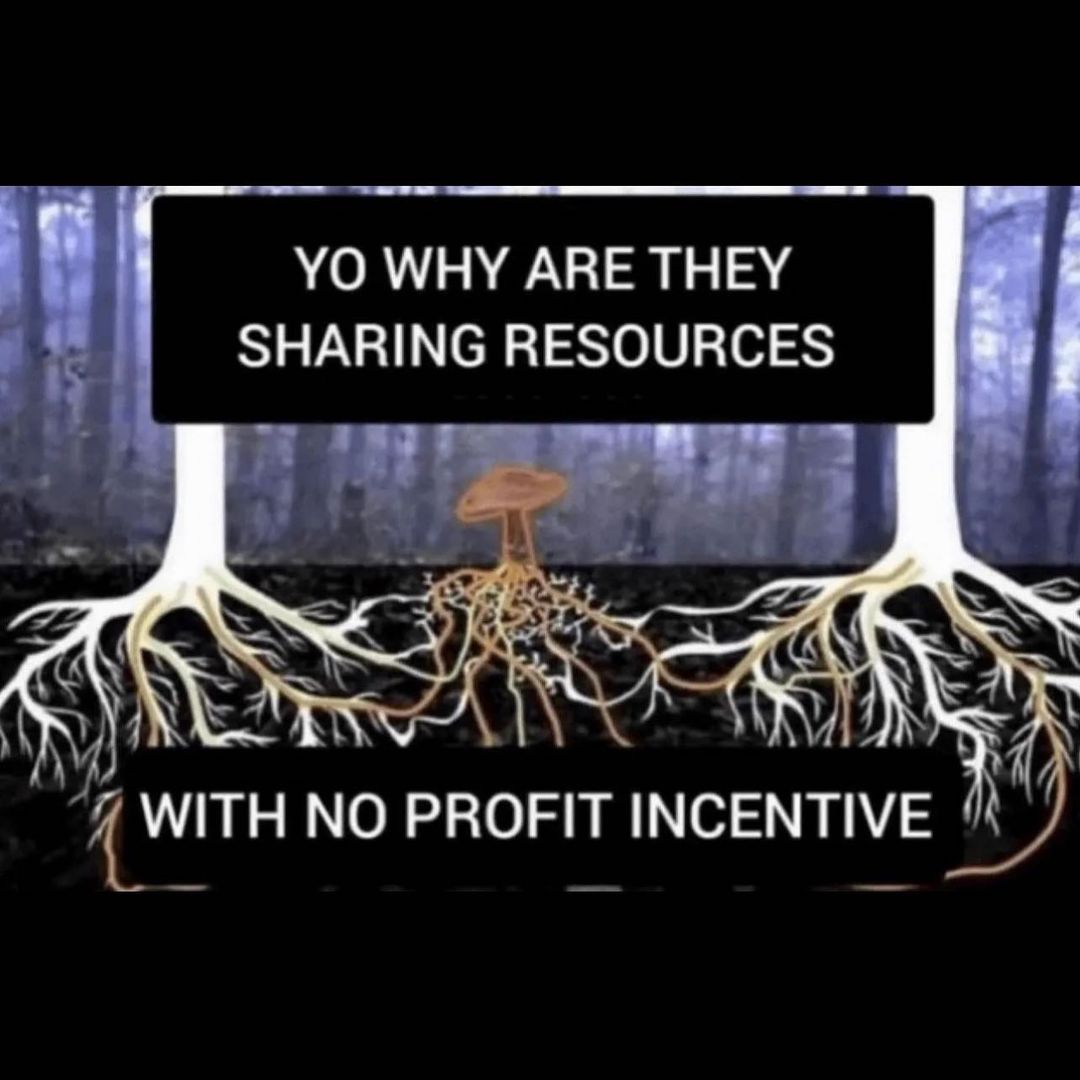this post was submitted on 03 Jan 2024
771 points (100.0% liked)
196
16444 readers
1643 users here now
Be sure to follow the rule before you head out.
Rule: You must post before you leave.
founded 1 year ago
MODERATORS
you are viewing a single comment's thread
view the rest of the comments
view the rest of the comments

There likely could be other benefits to them sharing such as:
Similar for the tree, but also mushrooms are recycling minerals from dead material.
I don't know if there'd be "stingy" trees (aside from vastly different nutrient needs), I could see it more of miscommunication or having too much difference with language/biologic pathways. EDIT: Also I gotta imagine that giant trees don't even bother counting it for mushrooms so long as they aren't stressed. Sugar water is in the grid, take as much as you want.
I bet you chestnut trees are stingy little assholes. Prickly fucks.
At first, I read that as you accusing them of being a stingy asshole chestnut tree and I was about to inform you that you were in fact talking to a lemon, not a tree 😄
Trees that rely on myco networks usually only get giant because of previous myco networking bonds, which funnel excess nutrients between not just the fungi but also other trees within the system. And depending on the involved species, this sometimes includes multiple plant species exchanging nutrients.